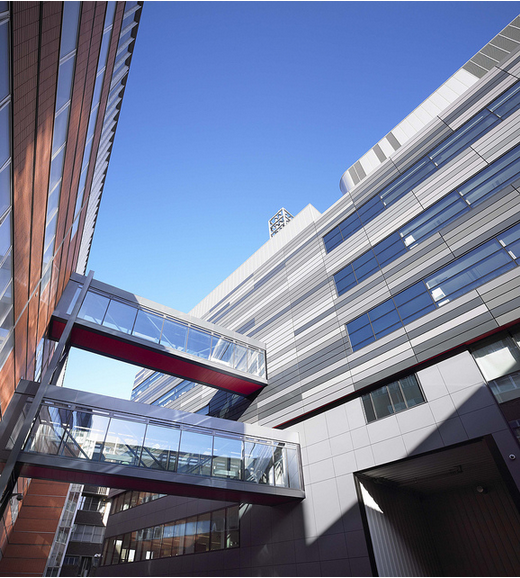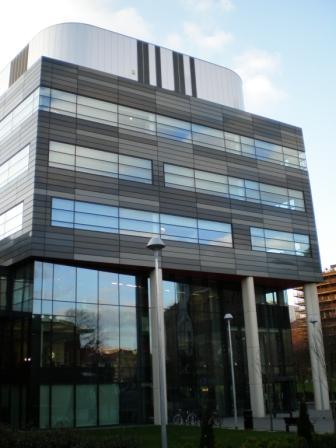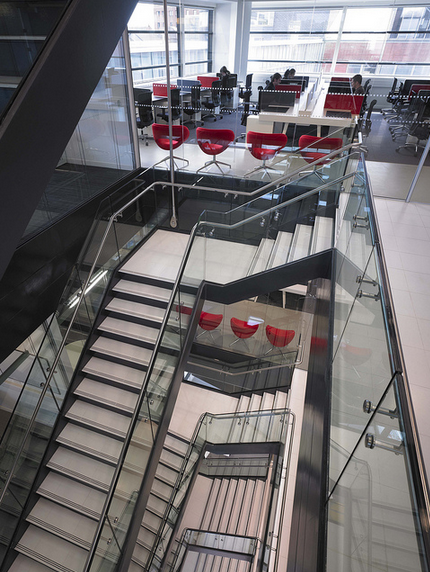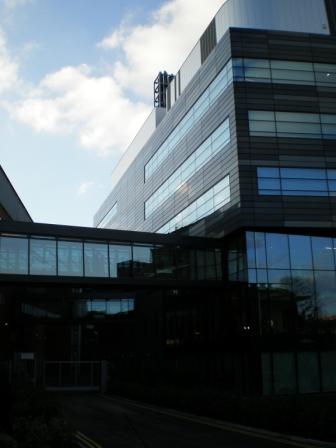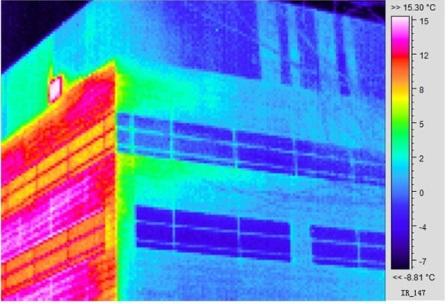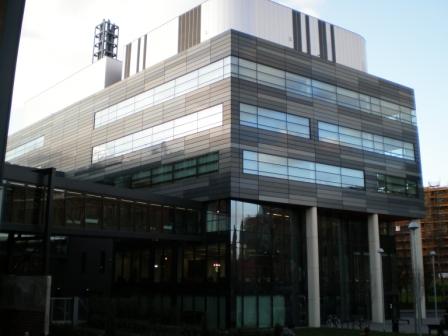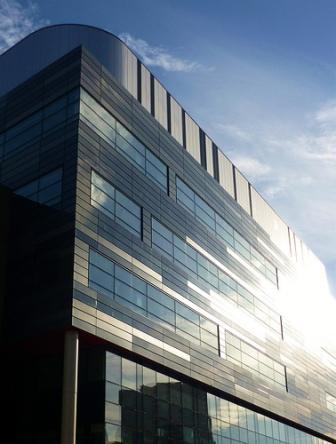Interview with Consultants
As one of the processes for assessing building energy performance, the team was granted a meeting with the mechanical and electrical consultants for the SIPBS building on 14th of March 2012. This meeting was used to gain a stronger understanding of the operation of the building and the reasons for its operatinal design. The transcript for this interview is shown below.
Before the meeting commenced the consultant stated that their involvement with the SIPBS building was on a strategic level and that their responses to some questions might be limited by this and that they may not be able to give full or accurate details of some issues that might be raised during the interview.
What assumptions were in terms of level of occupancy and occupancy profiles?
From research and experience consultants were able to assign a base load for the building. It was assumed that there would be a varying number of students present and therefore levels 1 and 2 (teaching areas) have assumed energy profiles.
AHU 1,2 and 3 were designed to run for 24 hours every day. Since these AHU’s service the laboratories (labs) they have to be constantly running, requiring at least one operational boiler. This is in line with UK regulation wherein AHUs are required to produce a minimum of six air changes/hour for laboratories. The building design is intended to have this increase to 12-15 air changes/hour when the labs are being cooled.
AHU 4, on the other hand, is run on a time scheduled as it serves only office and write-up areas.
There is an aseptic room that has no lab classification. Air is therefore re-circulated. Since it is a clean room by design, the amount of fresh air coming to the room is tightly controlled, which is the reason for the recirculation.
What was assumed in terms of plant operation and scheduling profiles for chillers and boilers?
The chillers are controlled by ambient temperatures (the chillers will be active if outside air temperature is above 13°C), using the BMS or dehumidification requirements. Dehumidification may be required in the fermentation lab because of the heavy use of steam (from a steam generator) for sterilisation purposes.
The boilers are designed to operate on a time schedule during the day and are shut down over night. The BMS, being self learning, dictates when the boilers fire up to allow enough time to heat the building before it becomes occupied. The boilers’ programming will either be scheduled or modulated. Observing the BMS Data shows it is more likely they are modulated.
What was the designed annual energy consumption for both gas and electricity?
Both were found using IES simulation with assumptions made by assigning templates to the building model.
The consultants conducted Thermodynamic modelling building design in IES.
What were the assumption in terms of how the lightning will operate and their operation schedules?
All lights were designed to be fitted with both presence and absence detector. They would also be controlled by PIR sensors which can dim the lighting to an appropriate level relative to external lighting conditions. The PIR sensors however, require regular recalibration.
How often did you meet representatives from estates management?
There were several initial meetings where the client discussed their aspirations with the consultants. However there was no definite initial set of designs and targets set for the project. Instead the consultant recommended obtaining a copy of design stage C and D as they were most likely to be the most comprehensive designs and targets applicable for the SIPBS building.
These were however, constantly changed throughout the entire design and construction stages.
How often did you meet representatives from sipbs?
During design stages the consultants met on several occasions with representatives from the SIPBS to discuss what they needed and wanted in each of the rooms. This was a two way process, SIPBS representatives would say what the needed and wanted and the consultants inform them of the likelihood and if unlikely, suggest better or preferable alternatives. This was done at the early design stages.
Several other meetings were held as the project progressed, during which the consultants attempted to show what they believed to be the requests and needs of the building’s intended occupants, what would be included in the final product and what may have been removed due to practical or budget restriction or limitations.
Was demand controlled ventilation (dcv via CO2 for example) considered and if it was, why was not implemented? was this due to cost?
It was considered during the design stages but decided against because it required installing CO2sensors, which are relatively expensive. Furthermore, chilled beams air flow rates are required to be kept at a reasonable level for effective performance and CO2 sensors would have interfered since they (sensors) require a build up of CO2 to be active. This can only happen at low air flow rates.
Was there a provision in the contract for the consultants to return to the building to perform seasonal commissioning?
The consultants were scheduled and did return to perform additional commissioning. This was however minor, involving only lighting sensors changes. The consultants would have liked to conduct full seasonal commissioning but this was not possible due to practical and cost considerations.
Seasonal Commissioning would also have awarded more BREEAM points to the building.
Do you feel commissioning of the building at a season such as summer or winter only, is enough to understand how the building will operate and perform annually?
The consultants understand that commissioning of a building in summer does not give a full and accurate representation of how it will perform (commissioning for SIPBS took place in summer). They would have liked to perform full seasonal commissioning. See above question.
Were the consultants pleased with the buildings breeam and epc ratings?
The consultants would have preferred the building design obtained a BREEAM rating of Excellent and an EPC of A. This was not possible because of budget restrictions. To obtain a BREAM rating of Excellent and an EPC of A, the use of renewable energy systems would need to have been incorporated into the building design in some way. Two design solutions were proposed by the consultants for incorporating renewables;
1. To re-enforce the roof so that it would be able to take solar thermal panels proposed for water pre-heating.
2. A district heating network which would support SIPBS building, Curran building and new Sport Centre (when built).
Neither of the proposals was taken up due to high costs. The consultants and contractors constructed the building with allowance for district energy network installation at a later date though. The mix of high renewable costs, long pay back periods and low budget meant the option for renewable energy systems was dropped.
Sustainable Glasgow, it was learned, is considering district heating networks and is targeting Strathclyde University, and Cathedral Street in particular. The consultant was however unsure if the university or the consultancy would have any part to play in this.
Did the building design change during construction or after design had been signed off? what were the reasons for these changes?
“All major projects will contain high levels of changes. It is almost impossible for this not to be the case”. At times during the construction stage, the consultants felt their initial position as building designers was compromised by their new role as consultants for the contractors. The consultants tried their best to make recommendations to ensure a finished building with as close to the initial design specifications as possible. However on several occasions, the contractors elected to go against these recommendations and implement their own solution.
When asked if the contractors had changed anything from the initial design which may impact of the energy performance of the building, the consultant declined to comment for professional reasons.
It is worth noting that at the construction stage the consultants were employed by the contractors, which shifted their professional loyalties from Strathclyde Estates management to the contractors from that stage.
The chillers are designed with heat recovery option, how is this implemented and is it operational?
Heat recovery (i.e., water cooled condenser) for chillers was investigated but not implemented because chilled water demand was expected to be low due to the usual low ambient air temperatures for Glasgow’s climate.
- • AHU 1 and 2 have no humidification. Initial design intended for AHU 1 and 2 was to include humidification but this was later removed.
- • AHU 3 has gas fired humidification.
- • AHU 4 and AHU for clean room have close control of relative humidity and temperature.
- • DX cooling was used for the laser labs as a way of saving money; otherwise the AHUs would have had to increase in capacity. They have static sheets on the lenses, which prevented deposits of dry air from the AHUs (carbon) on them lasers to avoid the causing to settle on the lenses which destroys them.
- • The FCU were intended to supplement the VAV system in removing heat gains from the commercial fridges in the labs.
Miscellaneous Information
The issue of the cold wall effect was raised (one the team’s discoveries during the site visit). The consultant suggested that this might have been because of a problem with the re-heater coil and that it may be time for an inspection. The consultant asserted that the re-heater is for groups of offices (i.e. one re-heater controls a number of offices) and that under ideal conditions (and a larger budget) each office would have its own re-heater.
When asked whether the team could obtain a copy of the IES model and the HVAC networks used for the building the consultants answered “NO”.
Interview with Consultants Conclusions
Conclusions from the interview were that design and specifications, process and delivery, for the building were adequate and in line with industry standards. However some limitations, financial and procedural and commitment, affected the final building delivered to the client.

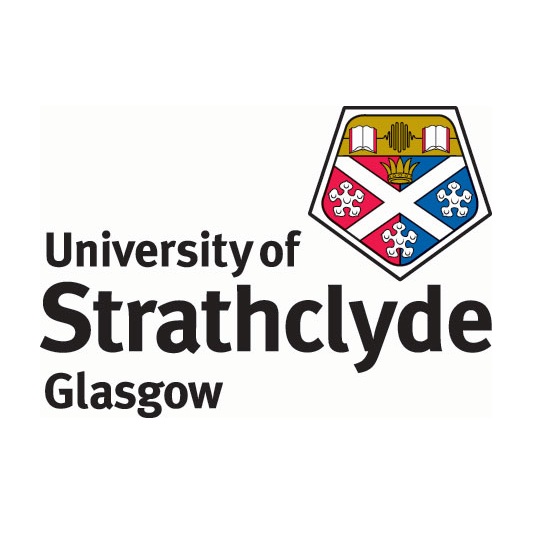

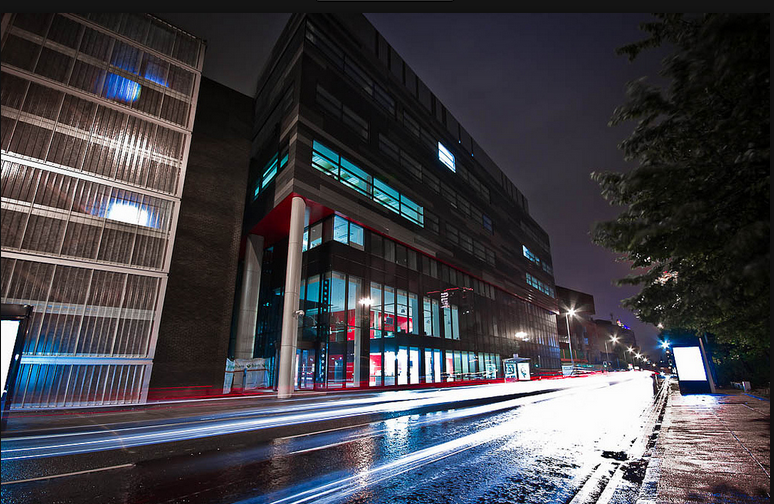
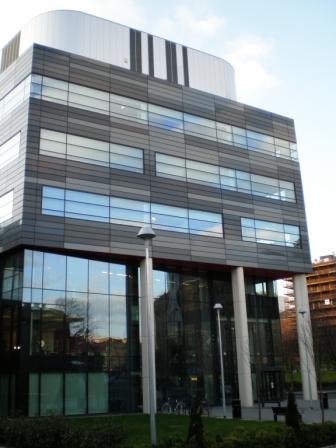
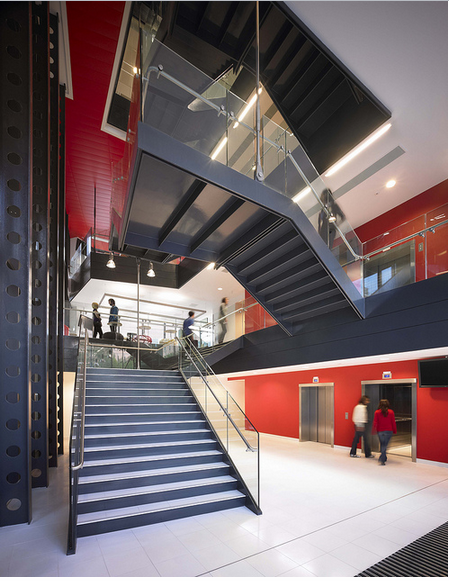
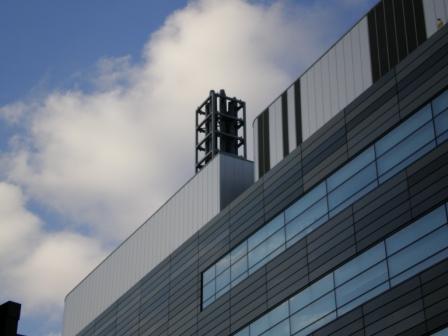
.jpg)
